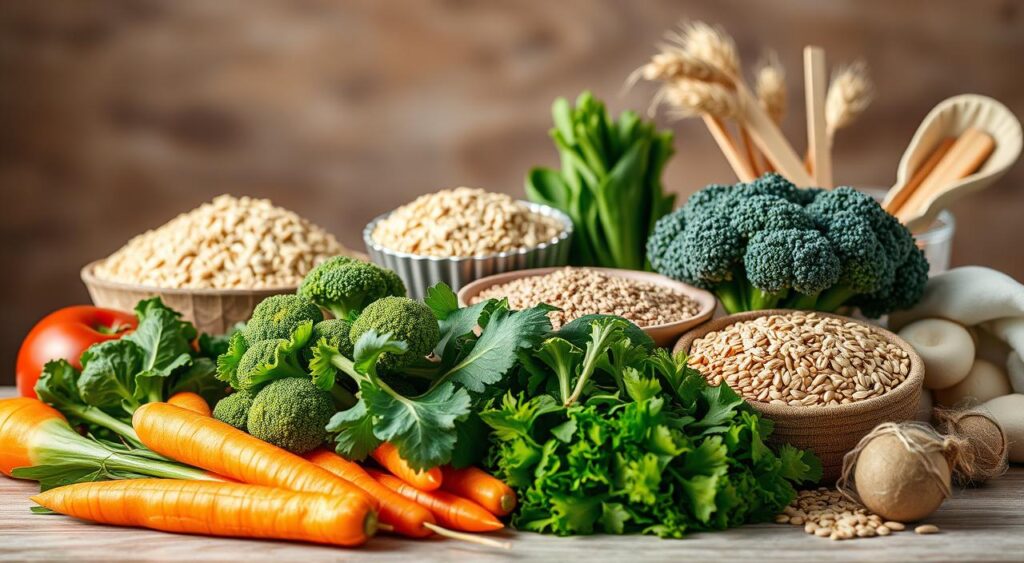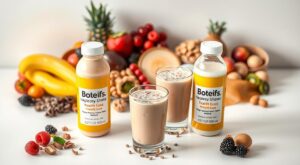Ever thought about how your food choices affect your blood sugar? In 2025, knowing about low glycemic index (GI) foods is key for stable blood sugar. These foods, ranked 0 to 100, are digested slowly. This prevents the quick spikes in blood sugar that can lead to weight gain and health risks.
By picking the right low glycemic foods, you’re making a smart choice for your health. It’s a step towards better living and managing diabetes. Let’s see how adding these foods to your diet can boost your health.
The Benefits of Low Glycemic Index Foods
Learning about low glycemic index foods can greatly improve your health. Studies show that eating these foods helps with weight loss, better blood sugar control, and lowers heart disease and type 2 diabetes risks. People who eat these foods often have better fasting blood sugar levels and better insulin sensitivity.
Low glycemic index foods are also high in fiber. This fiber helps you feel full, which can stop you from eating too much. Feeling full can lead to healthier eating and better weight management.
Pregnant women also benefit from low glycemic index foods. Eating these foods may lower the risk of having a big baby, leading to healthier pregnancies. Adding these foods to your diet can help with a smoother pregnancy and fewer complications during birth.
Best Low Glycemic Foods to Consider
Choosing the right foods is key to keeping blood sugar stable. Adding the best low glycemic foods to your diet can greatly improve your health. A good low glycemic index foods list includes many nutritious options.
Start with whole grains like steel-cut oats and quinoa. They are full of nutrients and have a lower glycemic response than refined grains. Legumes, such as lentils and chickpeas, are also great. They offer fiber and protein, making them perfect for meal planning.
Fruits are also a great choice. Apples, berries, and cherries have low GI scores. This means you can enjoy sweetness without raising your blood sugar. Non-starchy vegetables like kale, spinach, and broccoli are also good. They are low in carbs and high in vitamins, making them ideal for a low glycemic diet.
Healthy fats are important too. Avocados, nuts, and seeds help you feel full and support your dietary needs. Choosing minimally processed foods leads to better glycemic responses.
To improve your health, swap high-GI foods like white bread and sugary snacks for these healthier options. Making these changes helps manage blood sugar and boosts overall well-being.
Low Glycemic Index Foods: The Best Choices for Stable Blood Sugar
Quinoa and brown rice are top picks for your diet because they’re low in glycemic index. These whole grains are full of fiber, which helps your body digest them slowly. This slow digestion keeps your blood sugar stable.
Adding non-starchy veggies like spinach, broccoli, and zucchini to your meals is also smart. They’re packed with vitamins and minerals. Plus, they help keep your blood sugar levels healthy.
Low glycemic index foods digest slowly in your body. This slow digestion prevents the big spikes and drops in blood sugar that high-GI foods cause. Choosing these foods helps you manage your diet and keep your blood sugar stable.
Here’s a comparison of some popular low glycemic index foods:
| Food | Glycemic Index | Health Benefits |
|---|---|---|
| Quinoa | 53 | High in protein and fiber, aids in digestion |
| Brown Rice | 55 | Rich in nutrients, supports heart health |
| Spinach | 15 | High in iron, boosts energy levels |
| Broccoli | 10 | Contains antioxidants, supports immune function |
| Zucchini | 15 | Low in calories, promotes hydration |
How to Follow a Low GI Diet Plan
Starting a low GI diet means planning your meals carefully and choosing foods wisely. Learn about the glycemic index and pick foods with a score of 1 to 55. Include green veggies, most fruits, and legumes in your diet to control blood sugar.
When you go shopping, look for low GI foods. Reading food labels helps you make better choices. Choose products with a low glycemic index to stay healthy. Stay away from processed foods, as they have a higher GI.
Controlling your food portions is key in a low GI diet. Eat meals with low GI carbs, healthy fats, and proteins to keep your energy up. Adding whole foods to your diet boosts your health and helps manage blood sugar.
For more tips on this diet, check out this resource. A low GI diet can help you lose weight and improve your heart health.
Low Glycemic Meals: Recipes to Try
Exploring low glycemic meals is fun and healthy. These meals help keep your blood sugar stable and provide important nutrients. Try recipes with brown rice, chickpeas, leafy greens, and fish. Here are some tasty and healthy ideas.
Make a chickpea and spinach salad. It mixes chickpeas with spinach, tomatoes, and a light dressing. This salad is great because chickpeas are low glycemic.
Try a grilled salmon with quinoa too. Salmon has healthy fats, and quinoa is a low glycemic carb. Add herbs and lemon for extra taste.
Also, a brown rice stir-fry is a good choice. It’s colorful and full of veggies. Add lean chicken or tofu for more protein and better glycemic control.
Low glycemic meals let you try many ingredients while staying healthy. Find recipes you like to make eating fun and fulfilling.
Low Glycemic Recipes for Daily Consumption
Creating low glycemic recipes for daily meals keeps your blood sugar stable. It also offers tasty options for everyone. Start your day with a breakfast oatmeal made from rolled oats, chia seeds, and fresh berries. This mix is full of flavor and nutrients, all while keeping your glycemic load low.
For lunch, try a quinoa grain bowl with roasted veggies and a chickpea salad. Quinoa is a great base, packed with protein and fiber. It gives you energy that lasts all day.
Dinner can be a vegetable stir-fry with brown rice. Use colorful veggies, tofu, or chicken for a filling meal. Add low-sodium soy sauce or sesame oil for extra taste without raising your blood sugar.
These recipes let you enjoy a variety of meals that are good for you. Use whole grains, legumes, and lots of veggies. Each dish is not only tasty but also good for your health.

Top Low Glycemic Index Fruits
Adding low glycemic index fruits to your diet can boost your health and control blood sugar. Berries, apples, and pears are top picks because they have lower GI values. This means they won’t cause blood sugar spikes like high-GI fruits like watermelon do.
These fruits keep your blood sugar stable and offer key nutrients. They’re full of fiber, which is good for your digestion and keeps you feeling full. Plus, they’re packed with vitamins and antioxidants that help your body and reduce disease risk.
| Fruit | Glycemic Index (GI) | Health Benefits |
|---|---|---|
| Blueberries | 53 | Rich in antioxidants; supports heart health |
| Apples | 39 | High in fiber; helps regulate digestion |
| Pears | 38 | Excellent source of vitamins; promotes hydration |
| Cherries | 20 | Anti-inflammatory properties; supports joint health |
| Strawberries | 41 | High in vitamin C; boosts immune function |
Incorporating Low Glycemic Index Vegetables into Your Diet
Adding low glycemic index vegetables to your meals is great for your health. Foods like leafy greens, carrots, and bell peppers are full of vitamins and minerals. They also help keep your blood sugar stable.
These veggies are high in fiber, which is good for your digestion. They also make you feel full, helping you stick to a healthy diet.
To add these veggies to your meals, here are some tips:
- Add them to salads: Make colorful salads with spinach, kale, bell peppers, and carrots.
- Include them in stews: Add zucchini and celery to stews for more flavor and nutrients.
- Use them as side dishes: Roast or steam broccoli or Brussels sprouts to go with your meals.
- Blend them into smoothies: Add spinach or kale to your smoothies for a nutritious start.
These tips can make your meals more interesting and healthy. Try different combinations of low glycemic index vegetables. You’ll find what you like and enjoy the health benefits.
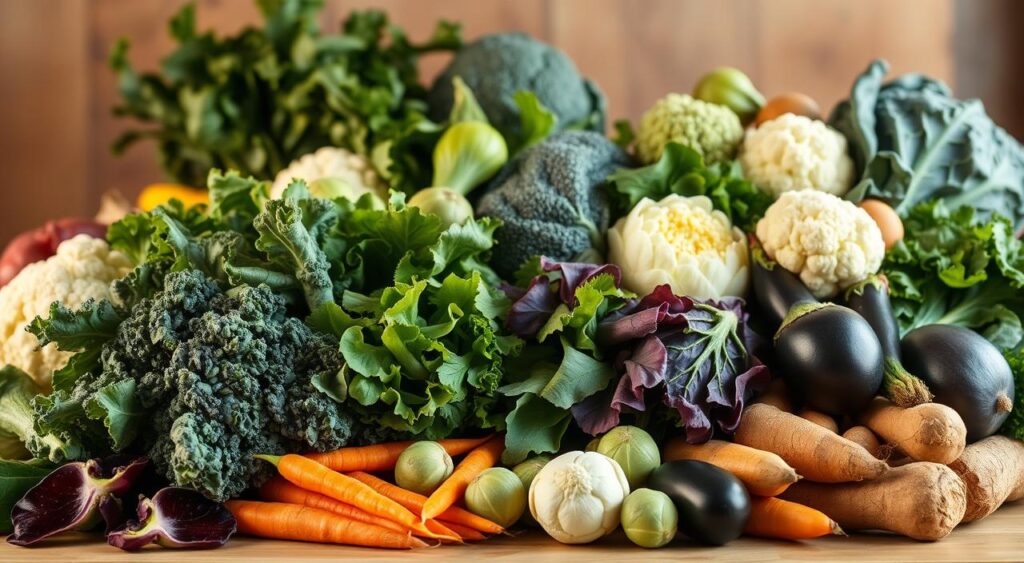
The Role of Low Glycemic Snacks in Blood Sugar Management
Adding low glycemic snacks to your diet is key for managing blood sugar. Choosing the right snacks can stop blood sugar spikes and keep energy steady all day. Good options include unsweetened Greek yogurt, nuts, and raw veggies. They fill you up without raising your blood sugar.
These snacks also stop hunger between meals. They give you energy without the need for high-sugar foods. You can mix and match different snacks to keep your blood sugar in check.
The Diabetes Canada Clinical Practice Guidelines also support choosing low-GI carbs. This means picking snacks that are low in glycemic index is smart for your health. Knowing how your snacks affect your blood is important for managing it well.
Try making snack packs ahead of time. This way, you always have healthy snacks ready. Prioritizing low glycemic snacks helps your health and keeps your blood sugar in balance.
Glycemic Load vs. Glycemic Index Explained
Understanding glycemic load vs. glycemic index is key when talking about carbs and blood sugar. The glycemic index (GI) shows how fast a food raises blood sugar. Foods with high GI cause quick blood sugar spikes. Foods with low GI lead to slower increases.
Glycemic load (GL) goes beyond GI. It considers the carbs in a food’s serving size. This makes GL a better measure of a food’s blood sugar impact.
| Food Item | Glycemic Index (GI) | Serving Size (g) | Glycemic Load (GL) |
|---|---|---|---|
| White Bread | 75 | 30 | 22.5 |
| Brown Rice | 55 | 150 | 16.5 |
| Apple | 38 | 150 | 6.0 |
| Carrots | 41 | 130 | 5.3 |
The table shows white bread has a high GI and a big glycemic load. Apples, with a lower GI, have a smaller glycemic load. This is because they have less carbs. Knowing these differences helps you choose foods that keep your blood sugar stable.
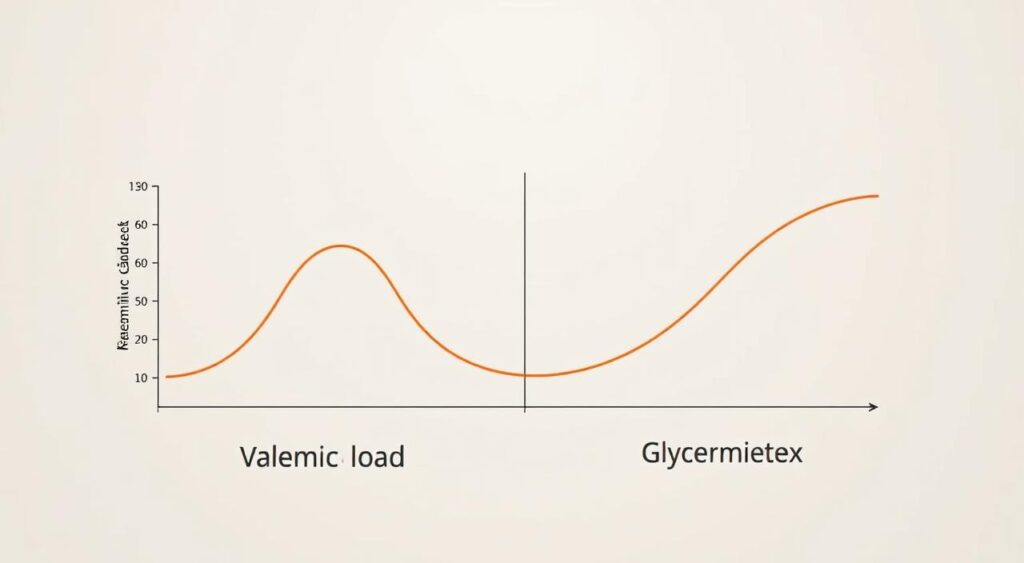
Factors Affecting Glycemic Index Values of Foods
Knowing what affects glycemic index values is key to good eating choices. Different things can change how a food affects blood sugar. For example, how you cook food can change its glycemic index a lot.
Cooking methods like boiling or steaming usually keep GI values low. But frying can increase them because of the extra fats.
The ripeness of fruits and veggies also matters. Ripe bananas, for instance, have a higher GI than unripe ones because they have more sugar. Processing levels also play a part; heavily processed foods often have higher GI scores.
Whole grains generally have lower GI values than refined grains. This is because whole grains keep more fiber, which slows down digestion.
At mealtime, mixing foods can make blood sugar responses tricky. Even foods with low GI values can raise blood sugar if eaten in big amounts or with high-GI foods. Knowing these factors helps you make better food choices.
Sample Meal Plans for a Low Glycemic Diet
Keeping your diet balanced and low in glycemic levels is easy with good meal planning. Here are some meal plans for a low glycemic diet. They help you enjoy a variety of foods all day long.
| Meal | Options |
|---|---|
| Breakfast | Oatmeal topped with fresh berries and a sprinkle of cinnamon; Greek yogurt with nuts and a drizzle of honey. |
| Lunch | Quinoa salad with mixed vegetables, chickpeas, and a vinaigrette dressing; whole-grain wrap filled with turkey, spinach, and avocado. |
| Dinner | Grilled salmon paired with steamed broccoli and sweet potatoes; stir-fried tofu with bell peppers and brown rice. |
| Snacks | Carrot sticks with hummus; apple slices with almond butter. |
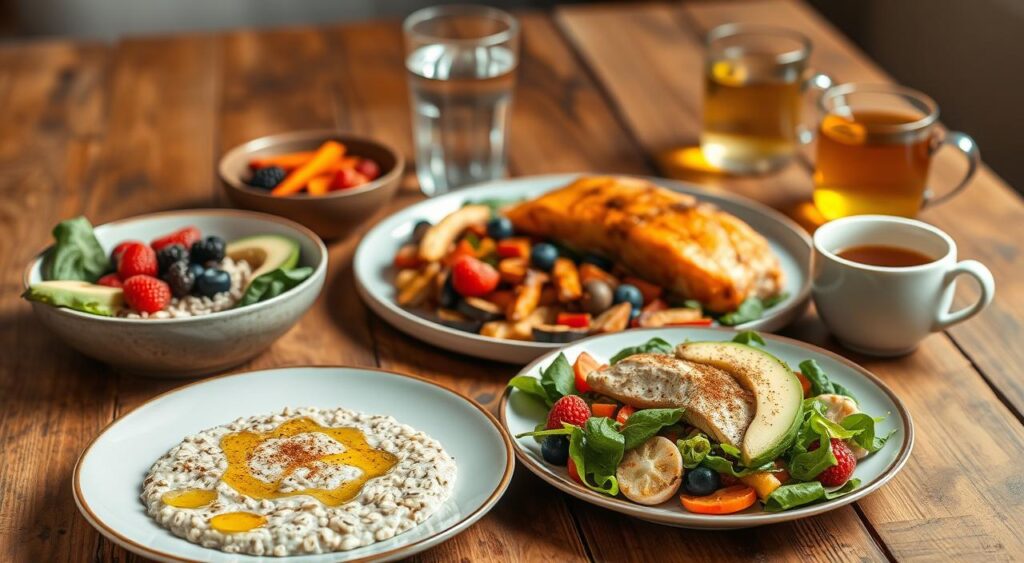
These meal plans show you how to eat well and keep glycemic levels low. When you shop for groceries, choose whole grains, fresh fruits, and veggies. Cooking meals in advance saves time and ensures you have healthy options ready.
Potential Drawbacks of Low Glycemic Index Foods
Low glycemic index foods have many benefits. But, there are some downsides to consider. One issue is that processed low-GI foods might not always be healthier. They can often lack important nutrients, which can affect your diet’s quality.
Another problem is focusing too much on glycemic index values. This can overlook the importance of fats and proteins in your meals. Focusing only on GI might lead you to ignore other key nutrients needed for a balanced diet.
Some low-GI foods can also tempt you to eat more because they taste good and are easy to grab. This can be a challenge for those trying to manage their blood sugar levels. It’s important to watch your portion sizes and check the nutritional content, even with low GI foods.
If you’re on a low glycemic diet, remember to look at the bigger picture of nutrition. Pay attention to the balance of macronutrients and choose whole foods. This approach will help you stay healthy and feel good.
Conclusion
Embracing low glycemic index foods is key for balanced blood sugar and health. These foods prevent sudden glucose spikes. They also promote healthier eating habits for long-term well-being.
By focusing on the glycemic index, you make informed choices. These choices fit your lifestyle and dietary needs.
Low glycemic index foods help keep energy stable and aid in weight management. This makes them a good choice for many. Remember, your preferences and health goals are important in planning your diet.
Understanding the benefits of low glycemic index foods helps you create a meal plan. This plan meets your health goals. By choosing these foods, you improve blood sugar control and quality of life.

